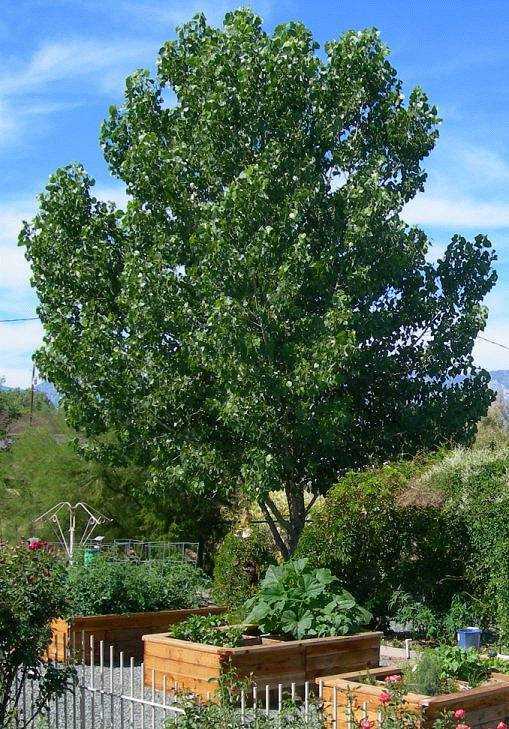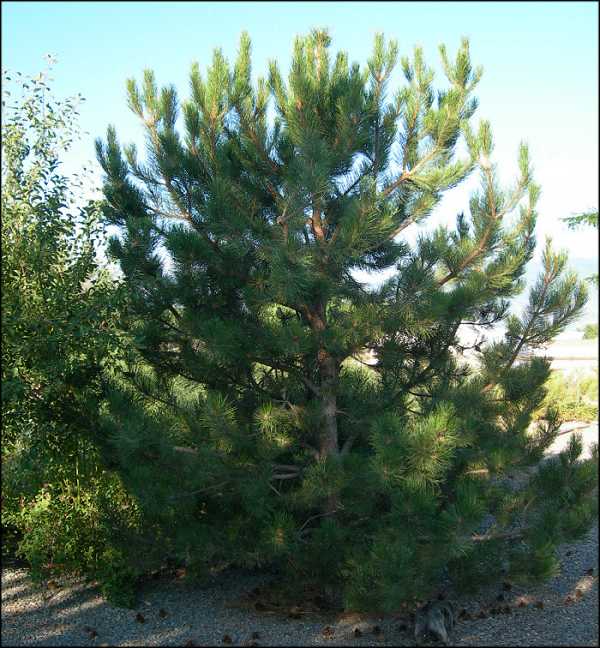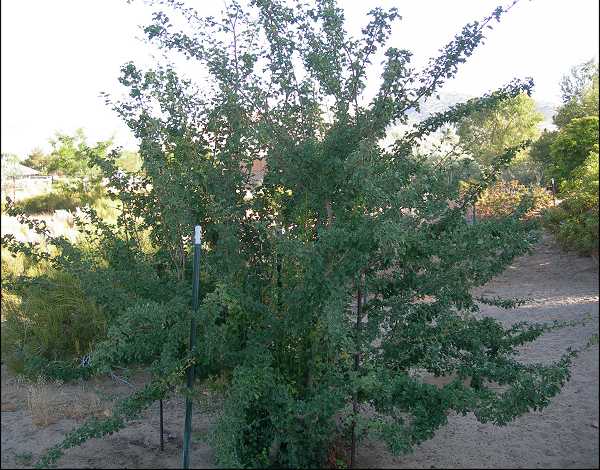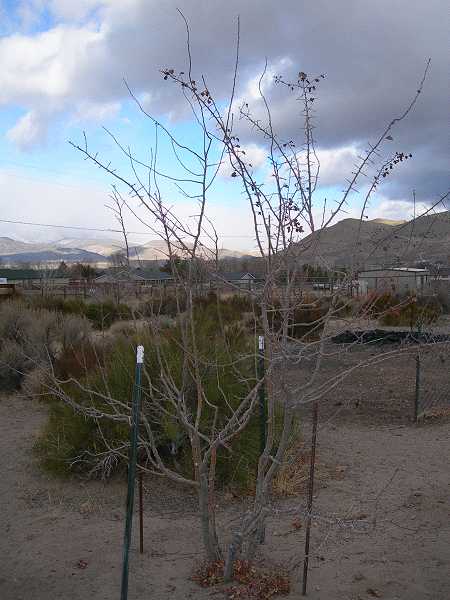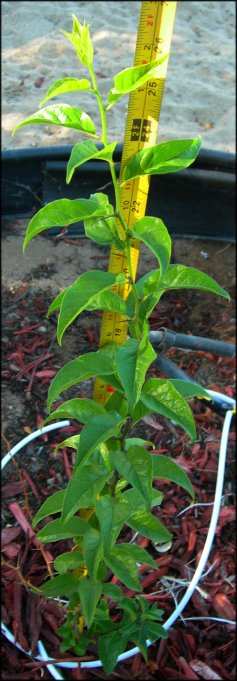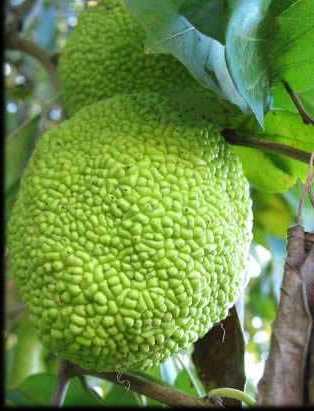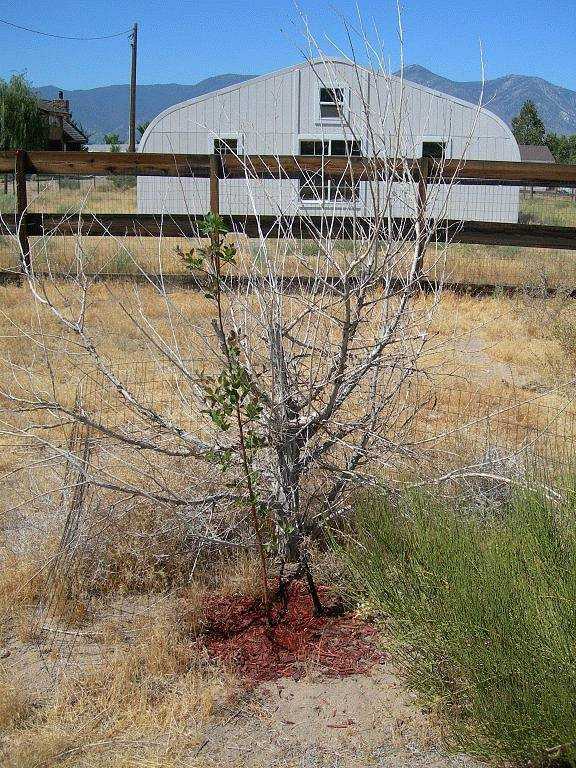
When we bought this place there was no vegetation, other than native.
All the good stuff - red ants, sage brush, rabbit brush, weeds up the wazoo.
The afternoon winds coupled with the little bundles of joy next door
riding their dirt bikes nonstop coupled with obnoxious dogs made for miserable days.

A wind break of some sort was the first priority and not knowing any better,
we had did our shopping through one of those discount plant catalogs.
Pictured on the very first page were these huge, lush green trees that were
supposedly a form of poplar that could grow fifty feet in five years!
We bought two of them and that did not quite happen. Part of it was our fault
because we did not have a reliable watering system, and we did not read the
fine print. The trees were heavy feeders.
Pictured in the background is what is left of the original tree.
In the foreground is a sucker off our oldest crabapple tree.
I planted this in the spring of 2006.
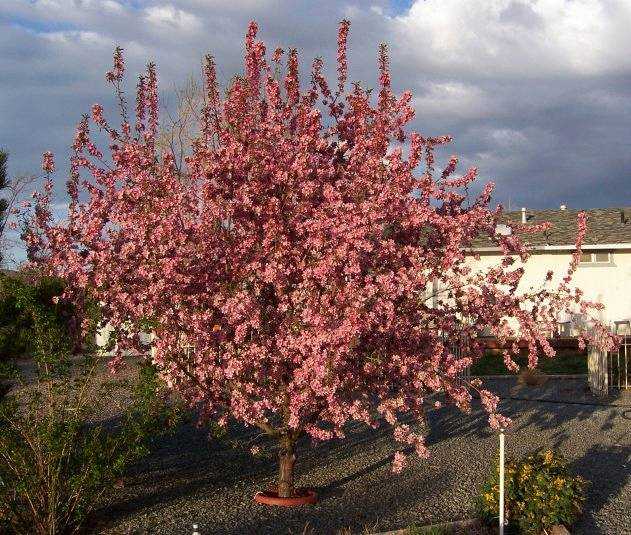
The sucker came from this tree, which was started as a seedling by a neighbor.
I don't know the specifics of this particular crab, but it is well suited for the climate.
It appears to be resistant to disease and is drought tolerant.
It puts out crab apples about the size of a nickel.
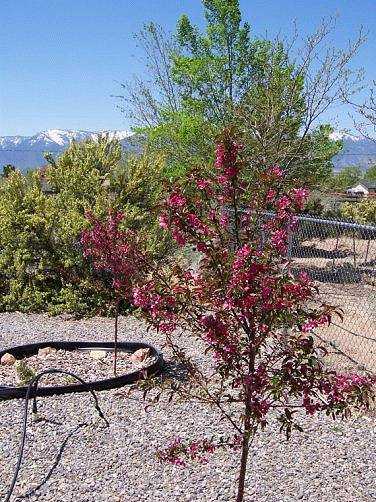
For over a year I had to make monthly trips through central Iowa and at the rest stops
they had the most attractive crabs - scarlet flowers in the spring and red / green leaves
in the fall. Small, persistent fruit.
A fellow traveler told me the trees were Malus Prairie Fire. Won several awards in the
mid west too.
Think I could find any for sale in Iowa? Heck no. These came out of Oregon .
They were sold bare root and were planted in spring of 2005.
They get plenty of water, but they seem to be slow growers.
